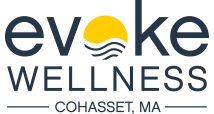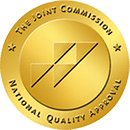The opioid crisis that we are in started in the 1990s. At that time, US physicians began prescribing narcotic medication to patients more frequently. Why? Because pharmaceutical companies assured providers that their patients would not become addicted to these medications. Unfortunately, the pharmaceutical companies were wrong, and millions of Americans have since faced the crisis of opioid addiction. Since the 1990s, the number of opioid-related overdoses has quadrupled the yearly average. Therefore, a drug addiction treatment program is crucial for people to overcome opioid addiction.
Opioids and opiates include a broad spectrum of both prescription (i.e. codeine, morphine, hydrocodone, fentanyl) and non-prescription drugs (i.e. heroin) that are made or derived from poppy plants. Here we will look at codeine and morphine, and what the difference is between these two drugs.
How Codeine and Morphine Contribute to the Opioid Crisis
The poppy plant has been used for centuries to cultivate opium and in more modern times opioids. Morphine was the first opiate medication derived from the poppy plant. It was first isolated in the early 1800s, and popular use of it increased in the mid-1800s after hypodermic syringes were invented.
Morphine was often prescribed in the hospital setting; however, it was known to be highly addictive. Codeine is a less potent medication than morphine and was more commonly used due to its fewer sedative effects. One big flaw in using codeine and morphine for pain management: patients that lived with chronic pain were often under-treated due to the medical industry not prescribing opioid medications for home use due to their addictive characteristics.
When physicians did prescribe these medications, it was very little, and oftentimes not enough for long-term pain control, or not a high enough dose to properly treat the patient. Pharmaceutical companies, as well as the FDA and World Health Organization, began pushing for a less addictive alternative to morphine and codeine to treat chronic pain. Pharmaceutical companies began touting these lower dose, higher strength medications, such as oxycodone and hydrocodone, stating they were not addictive like morphine and codeine. Thus, the opioid crisis began.
How Codeine and Morphine Are Different
Morphine is a poppy plant-derived, opiate medication used to treat pain. It works by changing the way your brain and nervous system react to pain.
Morphine was invented in the early 1800s to combat opium addiction. Scientists knew that opium could help with pain relief as well as suppress coughs, and treat diarrhea, and it was used as a sedative. Codeine is also a poppy plant-derived, opiate medication, and it was first isolated in the 1830s. The difference in morphine and codeine is that codeine has less analgesic and sedative effects. This means that codeine does not provide as much pain relief as codeine, and it does not cause as much of a “sleepy” effect.
Codeine is not as strong as morphine. That is because codeine is a derivative of morphine, and when ingested, it is metabolized into low-dose morphine within the body. There is a chemical difference in the medications as well. Today, both morphine and codeine are still used to treat patients in certain situations.
How Codeine and Morphine Are Used Today
Both codeine and morphine are still used in healthcare today. However, the medications are used for different reasons. Common reasons each medication is used today include: Codeine
- Pain Management
- Cough Suppression
- Diarrhea Treatment
- Restless Leg Syndrome
Morphine
- Pain Management
- End-of-life Care
- Rarely for procedural sedation
These drugs, no matter what they are prescribed for, also have common side effects. Those side effects include drowsiness, nausea, constipation, feeling dizzy, and stomach pain. Patients that have been prescribed either morphine or codeine are closely monitored for signs of distress, as well as for signs of misuse of the drug.
Signs of Codeine and Morphine Abuse
While most individuals that are prescribed codeine or morphine are under close supervision, there may still be misuse happening. There are also individuals that no longer have a prescription but are still actively using these or other medications. If you suspect you or a loved one may be misusing medications, there are certain signs and symptoms you can look for to be certain. Some of the signs and symptoms of medication misuse include:
- Forging prescriptions
- Stealing drugs from others
- Doctor shopping
- Repeated losing, running out early
- The specific type of drug requested
- Multiple dosage increases
- Using by non-prescribed route (e.g., injecting or crushing and snorting)
These signs and symptoms should not be confused with a dependence on prescription medications. Some patients that are long-term users of these medications (as prescribed), may develop a dependence on the medications.
According to the US National Library of Medicine and National Institutes of Health, regular opioid use, including opioids used in a therapeutic context, is associated with physical dependence. This dependence is characterized by a set of signs and symptoms when drug taking is stopped, and tolerance, in which more of the drug is needed to achieve the same intensity of the effect.
Signs of Opioid-Based Dependence
- Developing a tolerance over time
- Withdrawal symptoms
- Continuing to use despite the danger
- Giving up important activities
- Continuing to use despite problems in relationships
If you or a loved one are experiencing symptoms of dependence, speak to your healthcare team about your concerns. They can help you.
Recognize Opioid Addiction and Seek Treatment!
The first step to recovery is admitting there is a problem. It’s nothing to feel ashamed about. Many individuals that have been prescribed opioids struggle with withdrawal symptoms and misuse.
Here at Evoke Wellness in Cohasset, MA, our staff of highly qualified specialists is here to help you take back your control. We offer comprehensive, compassionate, professional care geared towards setting a solid and lasting foundation for lifelong recovery. The treatment we offer includes a medical detox program, which integrates the treatment for substance abuse with treatment for physical symptoms individuals may experience while in recovery. Call us today at 866.931.6429 and let us help you start your journey to recovery.




